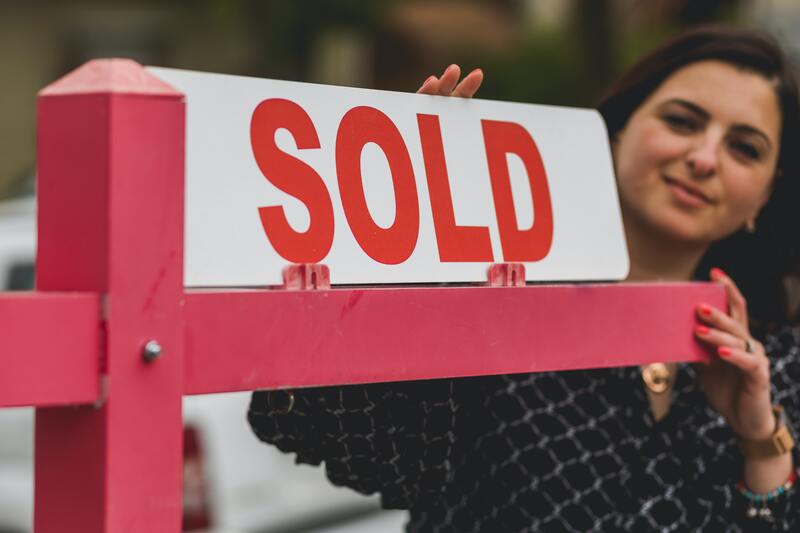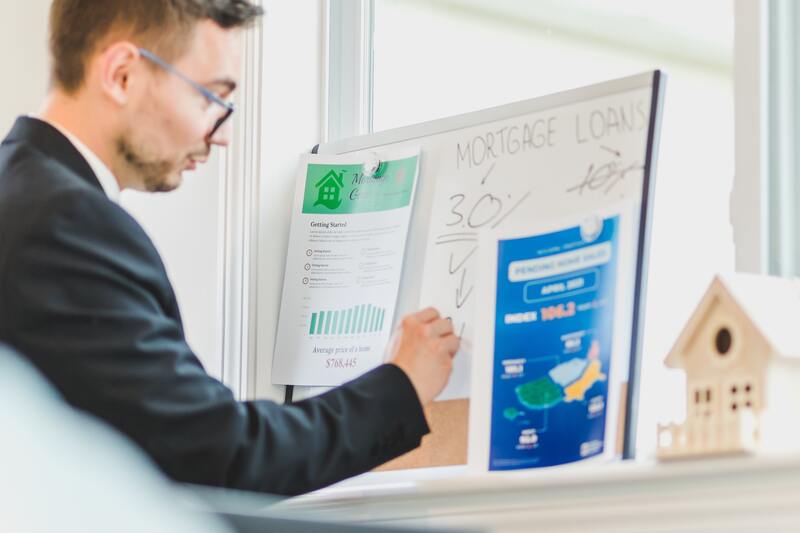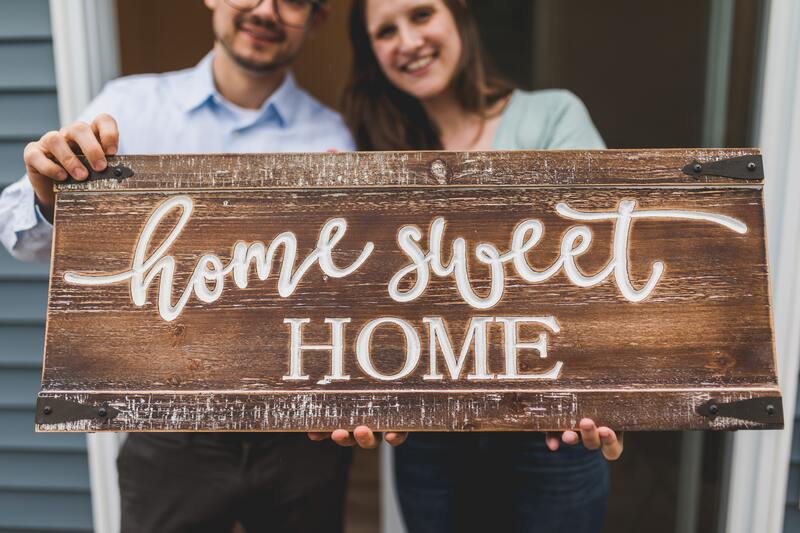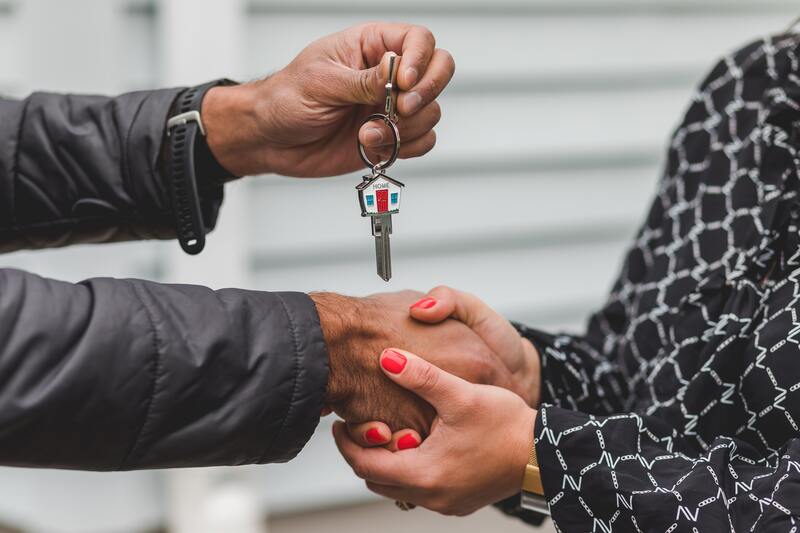Are you planning on buying your first home? One of the most crucial aspects you need to consider is saving for homeownership. You need to take several steps to ensure that you’re financially prepared for this significant investment. Here, we will guide you through seven critical steps in saving for homeownership.
Understanding the Costs Involved in Homeownership
Purchase Price vs. Total Cost of Ownership
When planning and saving for homeownership, most first-time home buyers tend to focus primarily on the home’s purchase price. This is only the beginning. Remember, the purchase price is merely the tip of the iceberg when it comes to the total cost of homeownership. To ensure a more accurate plan when saving for homeownership, you must understand all the associated costs.
Hidden Costs: Maintenance, Insurance, Taxes, and HOA fees
Beyond the purchase price, various hidden costs can significantly impact your budget. Maintenance costs, insurance, property taxes, and Homeowners Association (HOA) fees are among these. When you’re saving for homeownership, you must factor in these additional expenses to avoid financial stress in the future.
Maintenance Costs
Every house requires maintenance. These costs can add up, especially if you’re buying an older home or a larger property. Whether it’s a leaky roof, a faulty electrical system, or a broken heating system, you need to prepare for these unexpected expenses. Therefore, as part of your strategy for saving for homeownership, you need to allocate funds for potential maintenance and repairs.
Insurance and Taxes
Property insurance and taxes are two recurring costs that homeowners can’t avoid. Your property tax amount typically depends on your home’s value and your area’s tax rate. Insurance, on the other hand, protects you from financial loss in case of property damage due to various reasons such as natural disasters, fire, or theft. Depending on where you live, you might also need to consider additional insurance, such as flood or earthquake insurance. When you’re saving for homeownership, it’s essential to research and factor in these costs.
HOA Fees
If you’re planning to buy in a community with a Homeowners Association, you’ll have to pay monthly or annual HOA fees. These fees cover shared community expenses like landscaping, maintenance of common areas, and community amenities. You need to incorporate this additional cost when saving for homeownership.

Setting a Realistic Budget for Your Home
In saving for homeownership, setting a realistic budget forms the bedrock of your financial plan. It’s more than just crunching numbers – it’s about understanding your financial landscape and using this knowledge to fuel your homeownership dreams.
Determining What You Can Afford
Before you start saving for homeownership, it’s crucial to determine what you can realistically afford. This step often involves taking a hard look at your current financial situation. You need to assess your income from your job and any additional sources like investments or side gigs. This revenue forms the backbone of your homeownership budget.
Next, examine your existing financial obligations, including rent, utilities, groceries, healthcare, and any debt payments like student loans or car payments. Subtract these expenses from your income to see what remains. Remember, these expenses will likely continue even after you’ve achieved homeownership, so they’re important to include in your budget.
Also, consider the costs of owning a home beyond the mortgage payments. This includes property taxes, home insurance, potential homeowners association fees, and maintenance costs. Adding these to your projected expenses gives you a clear view of the financial requirements of homeownership.
Importance of Including Savings in Your Budget
Without a substantial savings plan, your dream of homeownership could slip through your fingers. This is why incorporating savings into your budget when you’re planning for homeownership is critical.
Firstly, savings act as a safety net. If you encounter financial difficulties or unexpected expenses – which are a common part of homeownership – you can tap into these savings rather than risk defaulting on your mortgage.
Secondly, savings are crucial for covering the upfront costs of buying a home, such as the down payment and closing costs. The more you save, the less you’ll have to borrow, which can save you thousands in interest over the life of your mortgage.
Creating a Savings Plan
In the process of saving for homeownership, a detailed savings plan can act as a roadmap, guiding you toward your goal. Begin by determining how much you need to save for a down payment, closing costs, and a comfortable emergency fund. Then, work backward from this goal to figure out how much you need to save each month.
Consider opening a separate savings account dedicated to your homeownership fund. Automatic transfers can help ensure you’re consistently working toward your goal. If possible, try to save more than your set amount each month. The faster you build your savings, the sooner you can realize your dream of homeownership.
Steps in Saving for Your Down Payment
When you’re charting your path toward saving for homeownership, setting aside money for a down payment stands as a vital milestone. You need a strategic approach to make this part of your journey less daunting and more achievable.
Understanding Down Payment and Private Mortgage Insurance (PMI)
One of the main goals when saving for homeownership is amassing a substantial down payment. The common norm among lenders is that buyers need to put down 20% of the home’s purchase price to avoid private mortgage insurance (PMI). PMI is an extra fee you pay if you put down less than 20% to protect the lender if you default on your mortgage payments.
However, while saving for homeownership, you need to know you can still purchase a house with a smaller down payment. If you’re able to put down less than 20%, you’ll likely need to pay for PMI. Although this increases your monthly payments, it can also make homeownership accessible sooner.
Setting a Timeline for Your Down Payment Savings Goal
To successfully navigate the course of saving for homeownership, you need to establish a timeline for your down payment savings goal. Assess your current financial situation, calculate how much you can realistically save each month, and then determine how long it will take to reach your desired down payment amount.
Remember, saving for homeownership isn’t a sprint—it’s a marathon. You might need months or even years to save enough for a down payment, depending on your income and the price of the home you want to buy. Staying patient and consistent is key.
Exploring Down Payment Assistance Programs
When you’re saving for homeownership, it’s worth exploring down payment assistance programs. These programs, offered by government entities or private organizations, can significantly reduce the burden of saving for a down payment, making your dream of homeownership closer than you might think.
Some programs offer low-interest or deferred payment loans, while others may provide grants you don’t have to repay. As part of your strategy for saving for homeownership, research these programs to help you reach your down payment goals faster.

Improving Your Credit Score for Better Mortgage Terms
In saving for homeownership, your credit score emerges as a significant player. Why? Because the better your credit score, the more favorable the mortgage terms you can secure. Lower interest rates can come your way, reducing the overall homeownership cost.
The Influence of Credit Scores on Mortgages
Let’s break this down. When it comes to saving for homeownership, you need to comprehend the relationship between credit scores and mortgage terms. Mortgage lenders carefully scrutinize your credit score. A higher score can lead to lower interest rates, which translates into lower monthly payments. Over the lifetime of a mortgage, this could mean saving tens of thousands of dollars. Therefore, improving your credit score is an invaluable step in your plan for saving for homeownership.
Proactive Steps to Improve Your Credit Score
You might wonder, “What can I do to elevate my credit score?” Here are some strategies you can employ.
Regular, On-Time Bill Payments
Paying your bills on time is a straightforward yet essential step in enhancing your credit score. Lenders want assurance that you can manage your finances responsibly and consistently. Regular, punctual bill payments can build that confidence and pave the way to lower interest rates, making saving for homeownership more feasible.
Debt Reduction
Reducing your existing debt is another active step towards bettering your credit score. High levels of debt can be a red flag to potential lenders, making saving for homeownership more challenging. Therefore, prioritize paying off debts, especially high-interest ones, to improve your credit health.
Avoid Unnecessary Credit Applications
Applying for new credit can temporarily lower your credit score due to the required hard inquiries. If you’re in the process of saving for homeownership, consider limiting new credit applications unless necessary.
Understanding and Monitoring Your Credit Report
Knowing your credit report inside out is key in your journey of saving for homeownership. Your credit report contains the data used to calculate your credit score. Regularly review your credit report to keep track of your progress and ensure the information is accurate.
Correcting Errors on Your Credit Report
If you spot inaccuracies on your credit report, take immediate steps to rectify them. Incorrect information can adversely affect your credit score, potentially sabotaging your saving for homeownership goals. You can dispute errors by contacting the credit bureau and the organization that provided the information.
Exploring Different Mortgage Options
When you’re earnestly saving for homeownership, understanding and exploring different mortgage options is vital. The type of mortgage you choose can profoundly impact your financial health in the long run. Let’s break down some common mortgage types and their implications for first-time home buyers.
Understanding Various Mortgage Types
You can consider a few mortgage types in your journey of saving for homeownership. Let’s explore the pros and cons of each.
Fixed-Rate Mortgages
Fixed-rate mortgages are the most traditional mortgage type. You pay the same interest rate for the entire term of the loan, which can be reassuring when you’re budgeting and saving for homeownership. The consistent payments make it easier to plan for the future, but the downside is that if interest rates fall, you’re stuck with your original rate unless you refinance.
Adjustable-Rate Mortgages (ARMs)
In contrast to fixed-rate mortgages, ARMs come with interest rates that adjust over time. Initially, you might enjoy a lower rate than a fixed-rate mortgage, making it an appealing option for those saving for homeownership. However, the rate can rise over time, leading to potentially higher payments down the line.
Government-Insured Loans
Several government agencies offer mortgage loans with various benefits. These loans, like the Federal Housing Administration (FHA) loans, Veterans Affairs (VA) loans, and United States Department of Agriculture (USDA) loans, often require smaller down payments or offer better rates, making the goal of saving for homeownership more achievable for many.
The Importance of Pre-Approval in the Home Buying Process
Getting pre-approved for a mortgage can be a significant step forward when you’re deep into saving for homeownership. Not only does pre-approval give you a clear idea of how much you can borrow, but it also shows sellers that you’re a serious buyer.
During pre-approval, a lender evaluates your creditworthiness and financial situation to determine how much they’re willing to lend you. This process can help you refine your savings plan and focus on houses within your budget, making the process of saving for homeownership more goal-oriented.
Once you’re pre-approved, you can use this to your advantage when house hunting. Sellers often prefer pre-approved buyers because it demonstrates they can secure financing, helping close the deal faster. In a competitive market, pre-approval can give you an edge, making your dream of homeownership a reality sooner.

Considering Additional Costs of Moving and Settling In
One of the less-mentioned aspects of saving for homeownership is accounting for the costs associated with moving and settling into your new home. A lot more than the purchase price is involved when you make the transition from renting to owning. When you start saving for homeownership, you need to factor in these additional costs to avoid any financial surprises.
Budgeting for Moving Costs
Hiring professional movers is one of the initial costs you’ll encounter when moving into a new home. Depending on the distance and the number of belongings you have, the cost of moving can range from a few hundred to several thousand dollars. When saving for homeownership, always include an estimate of these costs in your budget.
Additionally, consider the costs related to updating your addresses, which may involve charges for changing information on your driver’s license or other official documents. Also, factor in potential travel expenses if you’re moving long-distance, which could include flights, hotels, meals, and gas.
Essential Home Setup Costs: Furniture, Utilities, and Renovations
Purchasing furniture and setting up utilities are further costs to consider when saving for homeownership. Your new home may require additional or new furniture, especially if you’re moving from a smaller apartment to a larger house. Quality furniture is an investment, so it’s worth budgeting for this when saving for homeownership.
Utility setup costs, such as internet, electricity, gas, and water, can also add up, particularly if installation fees or deposits are required. When saving for homeownership, make sure you research these costs in advance and include them in your budget.
You should also set aside funds for potential renovations or improvements your new home may need. Even if it’s a new construction, you may want to adjust it to suit your style or needs better.
Planning for the Unforeseen: Buffer Fund
Creating a buffer fund is a crucial yet often overlooked aspect of saving for homeownership. Unexpected costs are bound to arise during the moving process. These may include repairs that were not identified during the home inspection, or sudden expenses like needing to replace a broken appliance.
When saving for homeownership, allocating funds specifically for these unexpected expenses is wise. This buffer fund provides a safety net that can help you navigate the financial aspect of homeownership more comfortably.
Incorporating Homeownership into Your Long-Term Financial Goals
Homeownership can become a fruitful investment when properly planned and managed. However, it’s imperative that it be harmoniously balanced with your other financial objectives, such as retirement savings.
Viewing Homeownership as an Investment
It’s essential to look beyond the immediate costs when saving for homeownership. Instead, start viewing your potential home as an asset and a long-term investment. This perspective shift can greatly influence saving strategies, property selection, and financial decision-making.
For instance, the neighborhood’s prospects, the property’s condition, and its potential for value appreciation should all be factors in your decision-making process. Considering these aspects during your home-buying journey not only aids you in saving for homeownership but also positions you to make strategic choices that will enhance your investment’s value over time.
Balancing Homeownership with Other Financial Goals
While saving for homeownership is a significant goal, it shouldn’t overshadow other important financial objectives, especially your retirement savings. The compounding power of money means that consistently saving and investing for retirement from an early age can substantially grow your retirement nest egg.
Thus, when saving for homeownership, consider how your monthly mortgage payments, home maintenance expenses, and property taxes will impact your ability to contribute to your retirement funds. By striking the right balance, you can ensure that homeownership complements your financial wellness rather than compromise it.
Creating a Diversified Financial Plan
A diversified financial plan can help ensure that your money is working for you across multiple fronts. Therefore, allocate funds for investments, emergency savings, and retirement besides saving for homeownership.

Preparing for Life Changes
Another aspect you need to consider when saving for homeownership is the potential life changes that might occur in the future. These changes can significantly impact your financial situation, whether it’s expanding your family, changing careers, or facing unexpected health issues.
Building a Financial Cushion
Creating a financial cushion when saving for homeownership can help you navigate these unexpected life events. This fund could cover several months of living expenses, giving you the flexibility to adjust to your new circumstances without jeopardizing your financial stability or homeownership goals.

No responses yet